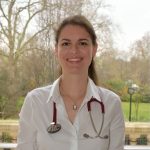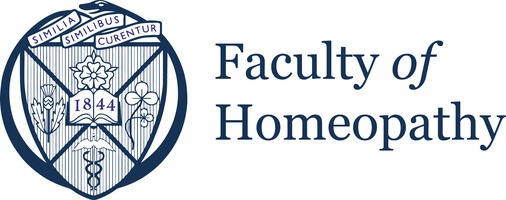Most people think they already know (enough) about the benefits of regular physical exercise. However, you’ll be surprised, at first, when you read this, and you have a look at the studies. Eventually, you may wonder why, unfortunately, so many oncologists still do not insist on it.
When exercising, similarly when receiving a massage, you tell your body it matters, it is loved and respected, and also, it gets its own desire to live. It is well known that the regulation and defence mechanisms that contribute to fighting cancer can be directly stimulated by exercise.[3-17]
Let’s have a look at how this occurs:
- Exercise reduces the quantity of adipose tissue, the principal storage site of carcinogenic toxins in humans.
- Physical activity modifies our hormonal balance by reducing the excess of oestrogen and testosterone that stimulates the growth of cancers (in particular, cancer of the breast, prostate, ovary, uterus and testicles).[18]
- Blood-sugar levels are also reduced by exercise, and, as a result, the secretion of insulin and IGF, contribute so dramatically to tissue inflammation and to the growth and spread of tumours.[12,19,20]
- It even acts directly on the cytokines responsible for inflammation, by lowering their level in the blood.[21]
- Physical activity, like meditation, has a direct effect on the immune system, seemingly protecting it against the stress of bad news. This is through endorphins, neurotransmitters which are released in our brain and boost our immune system making Natural Killer cells (NK) more active against cancer cells.[22]
Arthur LaPerrière PhD, at the University of Miami, examined the protective effect of exercise against stress. He randomly assigned his patients to exercise for one month before they received their diagnosis of HIV+. (At the time the study was carried out, this diagnosis was equivalent to a death sentence, so it was up to each patient to deal with it psychologically as best (s)he could.) In most patients, upon learning about their fate, the level of NK cells dropped rapidly. This reaction, however, was not seen in those who had been assigned to exercise.[23]
In another study from the same group, the effect of exercise improving the immune system (measured by an increase in the CD4 count) was comparable in magnitude to that of the AIDS drug AZT.[24] Without the side effects of these, of course!
When it comes specifically to cancer, regular physical activity can be one of our best allies. Cancer itself causes fatigue that, together with the exhaustion from treatments, is one of the most discouraging aspects of the disease. Rest has no effect, nor does sleep. However, physical exercise has shown to be one of the most proven methods to relieve fatigue resulting from disease or from its treatment. [25]
Wendy Demark-Wahnerfried, PhD of Duke University, in the Journal of Clinical Oncology, suggested a drop in relapse rate of 50 to 60% with exercise in patients with breast cancer. This is such an impressive effect that she doesn’t hesitate to compare it to the powerful effects of chemotherapy with Herceptin (for certain types of breast tumours), a revolutionary drug qualified in 2005 as a ‘major turning point in the eradication of suffering and death from cancer. However, unlike pharmacological anti-hormone treatments, the protective effect of exercise is not limited to oestrogen-positive breast cancer, nor does it have its side effects.
Two studies, one by the Mayo Clinic and the other by the University of North Carolina show comparable effects of exercise on oestrogen-negative breast cancers.[11,15] Moreover, still better than Herceptin, physical exercise provides benefits to patients with a broad variety of cancers. A comparable level of protection has been shown against recurrence or aggravation of cancer of the prostate (as much as a70% drop in the risk of death in men over the age of sixty-five), Of the colon and of the rectum. A protective effect has also been documented against cancer of the ovaries, the uterus, the testicles and the lung.[4,17]
After learning about the amazing power of our own body that can be stimulated my physical activity, there are only a few questions left:
- What type of exercise should I do?
- You should do whatever activity you enjoy (running, swimming, tai-chi, yoga, pilates, karate, tennis, ….. )
- How intense should the activity be?
- I recommend deciding on this on your own. A good guide is to check how you feel afterwards, your aim is to feel better after exercising. If you feel more exhausted, reduce the intensity or the time you spend doing it. If you decide to walk/run, one easy tip regarding the recommended speed is: as fast as you can still talk but no longer sing.
- Frequency and duration?
- Again, this should be adjusted for each person. It would be ideal for exercising every day (or 6 days weekly), for example, walking 30-45 minutes on a daily basis. However, depending on your situation and on the type of cancer. In the study of HIV patients, those who exercised did cycle in a gym for 45 minutes three times a week.
It is important that you enjoy it (so your brain produces endorphins). Otherwise, if it makes you feel anxious, be aware that stress stimulates the release of stress hormones, such as noradrenaline and cortisol. These in turn, can ease a proinflammatory environment in your body. This is why it is so important to choose an activity you enjoy. There is a huge variety, so I’m sure you’ll find the one that suits you best.
Hydration during exercise
Hydration is very important during exercise and the Integrated and Holistic Medicine now offers hydration drips in London to aid with your everyday hydration needs.
We offer vitamin drips such as the Myers cocktail and high dose vitamin c iv. You can browse the iv drips in the iv drip menu.
The IV drip therapy is available at our London clinic or you can have your your iv drip at your home
Have fun!!
References:
- Dr David Servan-Schreiber, 2007. “Anti cancer – a new way of life”. ISBN 978-0-718-15684-8
- Fernández Martínez, Odile; 2013. Mis recetas anticáncer – Alimentación y vida anticancer. ISBAN 978-84-7953-437-0
- B. Tehard, C. M. Friedenreich, I. M. Oppert, F. Clavel-Chapelon, ‘Effect of physical activity on women at increased risk of breast cancer: results from the E3N cohort study’ Cancer Epidemiology, Biomarkers & Prevention, 15(1), 2006: 57—64.
- J. A. Meyerhardt, E. L. Giovannucci, M. D. Holmes, et al. ‘Physical activity and survival after colorectal cancer diagnosis’ Journal of Clinical Oncology, 24(22), 2006: 3527—34.
- J. A. Meyerhardt, D. Heseltine, D. Niedzwiecki, et al. ‘Impact of physical activity on cancer recurrence and survival in patients with stage III colon cancer: findings from CALGB 89803’ Journal of Clinical Oncology, 24(22), 2006: 3535—41.
- M. D. Holmes, W. Y. Chen, D. Feskanich, C. H. Kroenke, G. A. Colditz, ‘Physical activity and survival after breast cancer diagnosis’ JAMA, 293(20), 2005: 2479—86.
- E. Giovannucci, Y. L. Liu, M. F. Leitzmann, M. Stampfer, W. C.W111’ett, A‘ Prospective Study of Physical Activity and Incident and Fatal Prostate Cancer’ Archives of Internal Medicine, 165, 2005: 1005—10.
- D. Ornish, G. We1’dner,.W. R. Fair, et al. ‘Intensive lifestyle changes may affect the progression of prostate cancer’ Journal of Urology, 174(3), 2005: 1065—9; discussion 9-70.
- A. V. Patel, C. Rodriguez, E. J. Jacobs, L. Solomon, M. J. Thun, E. E. Calle, ‘Recreational physical activity and risk of prostate cancer in a large cohort of US men’ Cancer Epidemiology, Biomarkers & Prevention, 14(1), 2005: 275—9.
- T. I. L. Nilsen, ‘Recreational physical activity and risk of prostate cancer: A prospective population—based study in Norway (the HUNT study)’ International Journal of Cancer 2006.
- A. Bardia, L. C. Hartmann, C. M. Vachon, et al. ‘Recreational physical activity and risk of postmenopausal breast cancer based on hormone receptor-status’ Archives of Internal Medicine, 166(22), 2006: 2478—83.
- R. J. Barnard, I. H. Gonzalez, M. E. Liva, T. H. Ngo, ‘Effects of a low-fat, high-fiber diet and exercise programme on breast cancer risk factors in vivo and tumour cell growth and apoptosis in vitro’ Nutr Cancer, 55(1), 2006: 28—34.
- M. L. Irwin, ‘Randomised controlled trials of physical activity and breast cancer prevention’ Exercise & Sport Sciences Reviews, 34(4), 2006: 182—93.
- P. E. Abrahamson, M. D. Gammon, M. J. Lund, et al. ‘Recreational physical activity and survival among young women with breast cancer’ Cancer, 107(8), 2006: 1777— 85.
- S. A. Adams, C. E. Matthews, 1. R. Hebert, et al. ‘Association of physical activity with hormone receptor status: the Shanghai Breast Cancer Study’ Cancer Epidemiology, Biomarkers & Prevention, 15(6), 2006: 1170—8.
- N. Mutrie, A. M. Campbell, F. Whyte, et al. ‘Benefits of supervrsed group exercise programme for women being treated for early stage breast cancer: pragmatic randomised controlled trial’ British Medical Journal, 334(7592), 2007: 517.
- C. M. Friedenreich, ‘Overview of the association between physical activity, obesity and cancer’ Eurocancer (Paris: John Libbey Eurotex; 2005).
- C. M. Friedenreich, M. R. Orenstein, ‘Physical activity and cancer prevention: etio— logic evidence and biological mechanisms’ Journal of Nutrition, 132 (Suppl. 11), 2002: 34568—648.
- P. S. Leung, W. J. Aronson, T. H. Ngo, L. A. Golding, R. J. Barnard, ‘Exercise alters the IGF axis in vivo and increases p53 protein in prostate tumour cells in vitro’ Journal of Applied Physiology, 96(2), 2004: 450—54.
- R. J. Barnard, T. H. Ngo, P. S. Leung, W. J. Aronson, L. A. Golding, ‘A low-fat diet and/or strenuous exercise alters the IGF axis in vivo and reduces prostate tumour cell growth in vitro’ Prostate, 56(3), 2003: 201—6.
- L. H. Colbert, M. Visser, E. M. Simonsick, et a1. ‘Physical activity, exercise, and inflammatory markers in older adults: findings from the Health, Aging and Body Composition Study’ Journal of the American Geriatrics Society, 52(7), 2004: 1098—104.
- Jonsdottir IH et al, Physical exercise, endogenous opioids and immune function. Acta Physiol Scand Suppl. 1997;640:47-50.
- A. LaPerrie‘re, M. H. Antoni, N. Schneiderman, et a1. ‘Exercise intervention attenu~ ates emotional distress and natural killer cell decrements following notification of positive serologic status of HIV-1’ Biofeedback and Sefl-Regulation, 15, 1990: 229—42.
- A. LaPerrie‘re, A. Fletcher, M. Antoni, N. Kimas, G. Ironson, N. Schneiderman International Journal of Sports Medicine, 12 Suppl(1), 1991: 853—7.
- A. Sood, T. I. Moynihan, ‘Cancer—related fatigue: an ‘update’ Current Oncology Reports, 7(4), 2005: 277—82.




